What makes the Arctic wolf so uniquely adapted to its frigid environment? The Arctic wolf, a marvel of nature’s ingenuity, thrives in conditions that would be inhospitable to most other life forms. This subspecies of the grey wolf has developed extraordinary physical and social characteristics that not only allow it to survive but to flourish in the Arctic’s extreme cold.
The Arctic wolf’s life is a testament to the power of adaptation. With its thick, white fur providing both warmth and camouflage, and its pack-oriented behavior ensuring efficient hunting and survival tactics, this animal exemplifies resilience.
The Arctic ecosystem, however, is undergoing rapid changes due to climate change, casting uncertainty over the future of these wolves. Their ability to adapt to these new challenges remains a critical area of study. This overview offers a glimpse into the fascinating world of the Arctic wolf, highlighting the importance of ongoing research to understand and protect this remarkable subspecies.
Key Takeaways
The Arctic wolf is specifically adapted to its cold environment with physical traits such as smaller ears and shorter muzzles. Its primary food sources include muskox, Arctic hares, and caribou. Threats such as climate change and industrial development are endangering its habitat and availability of food. Conservation efforts are vital for the survival of the Arctic wolf and the balance of its ecosystem. The preservation of the Arctic wolf becomes even more pressing as climate change impacts worsen.
Scientific Classification
Understanding the Arctic Wolf: Canis Lupus Arctos
The Arctic wolf, known scientifically as Canis lupus arctos, is a distinct subspecies of the grey wolf. This classification places it within the genus Canis and the family Canidae, showcasing its integral role in the canine family tree. Often referred to as the white wolf due to its distinctive fur color, the Arctic wolf’s classification is crucial for understanding its unique evolutionary adaptations and ecological role.
Physical and Genetic Traits
Analyzing the Arctic wolf’s physical and genetic makeup reveals why it’s classified as a separate subspecies. Its white fur, which provides excellent camouflage in snowy environments, and its physiological adaptations to withstand extreme cold are key distinguishing features. These traits are closely aligned with those of its cousin, the grey wolf, yet distinct enough to merit a separate classification.
Adaptations to the Arctic Environment
The Arctic wolf’s adaptations extend beyond its fur color. Its smaller ears and shorter muzzle reduce heat loss, while its strong legs enable it to trek through deep snow in search of food. These adaptations highlight the subspecies’ evolutionary journey and its specialized niche within the Arctic’s unforgiving habitat.
Ecological Significance
The role of the Arctic wolf in its ecosystem can’t be understated. As a top predator, it plays a vital part in maintaining the balance of its environment by controlling prey populations. This ecological significance further underscores the importance of its classification and the need for ongoing research to protect this remarkable subspecies.
Habitat
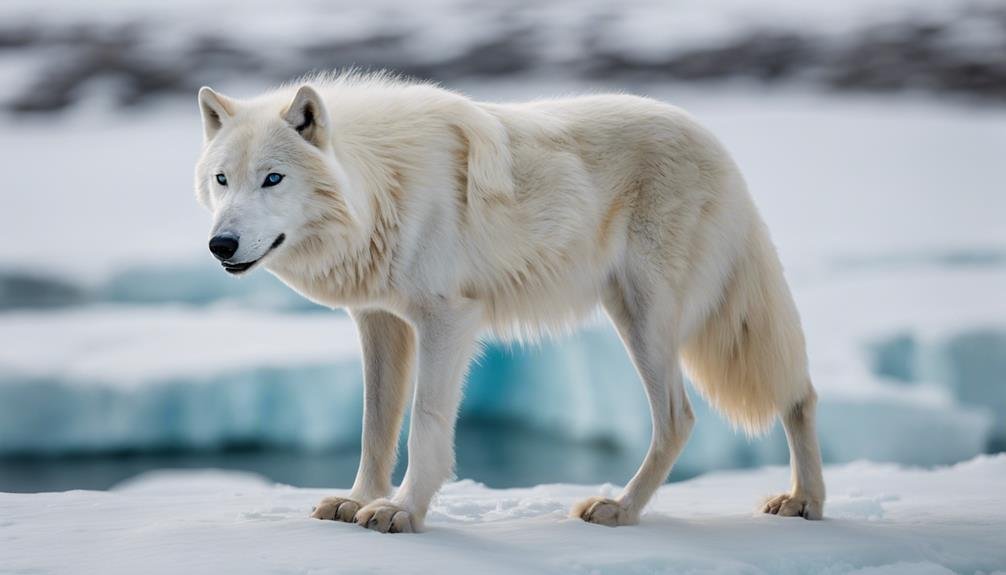
Arctic Wolf Habitats: A Deep Dive into Their World
Arctic wolves have mastered the art of living in one of Earth’s most extreme environments. These remarkable mammals have set up their homes in the Arctic regions of North America and Greenland. The landscapes they inhabit aren’t for the faint-hearted, featuring endless stretches of Arctic tundra, formidable coastal regions, and secluded mountainous areas. Their ability to thrive in these icy environments, where snow is a permanent fixture, is a testament to their incredible adaptability.
These wolves don’t just stick to the wide-open spaces; they’ve been spotted in locales sprinkled with shallow lakes, adding a bit more variety to their already diverse habitats. The tundra provides a special kind of ecosystem, one with glacier valleys, gentle rolling hills, and expansive ice fields. It’s in these settings that Arctic wolves carry out their day-to-day activities, hunt, and raise their offspring.
Choosing to live in such demanding conditions highlights the Arctic wolf’s unparalleled survival skills. Every aspect of their environment, from the tundra to the glacier valleys and ice fields, plays an essential role in their way of life, illustrating the deep bond between these wolves and their surroundings.
Diet
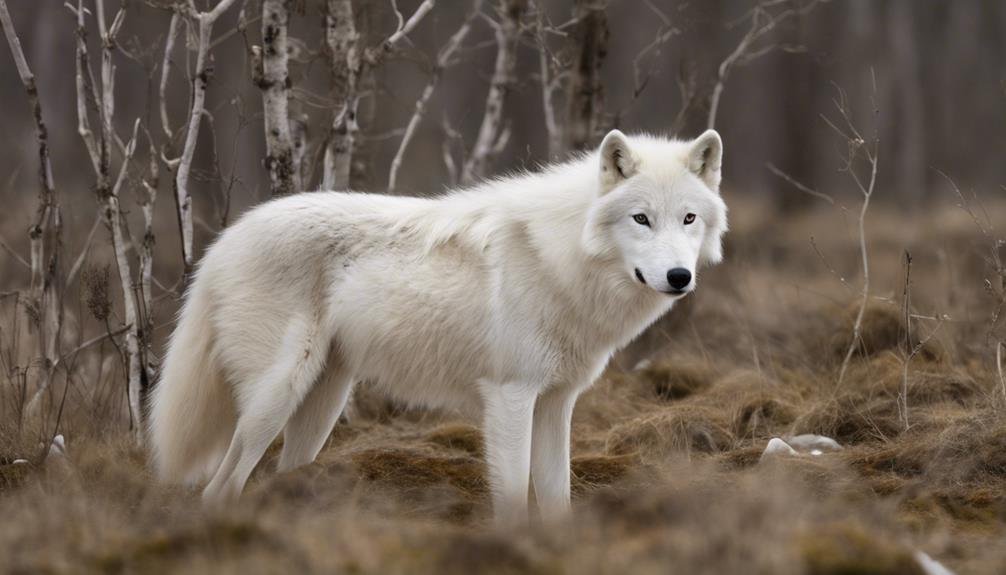
Arctic Wolf Diet and Ecosystem Dynamics
The Arctic wolf relies on a variety of prey to sustain its existence in the harsh conditions of the Arctic. Among its primary prey are muskoxen, Arctic hares, caribou, lemmings, and several species of nesting birds. This diet is instrumental in preserving the delicate balance of the Arctic’s ecosystem.
Hunting Strategies and Their Impact
Arctic wolves employ different hunting methods depending on the prey. For larger prey like muskoxen and caribou, they hunt in packs, a method that’s effective for taking down these robust animals. This pack hunting strategy isn’t just about survival; it also plays a crucial role in controlling the population of these herbivores, thereby maintaining the ecosystem’s balance.
On the other hand, when targeting smaller prey such as Arctic hares, these wolves might hunt solo or in smaller groups. This versatility in hunting methods showcases their adaptability to the changing Arctic environment.
Feeding the Next Generation
The nurturing of pups is a communal effort within the wolf pack. These young wolves depend entirely on the adults for food, which is often provided in the form of regurgitated meals until they’re old enough to participate in hunts. This practice ensures the survival of the pack’s next generation, playing a vital role in the continuity of Arctic wolves in their natural habitat.
Scavenging: An Adaptive Behavior
Aside from hunting, scavenging serves as a crucial survival tactic for Arctic wolves. This behavior highlights their adaptability, as they often traverse vast distances in search of carcasses. Scavenging not only provides an alternate food source during lean periods but also emphasizes the wolves’ role in energy flow within the Arctic ecosystem, ensuring nothing goes to waste.
Behaviour
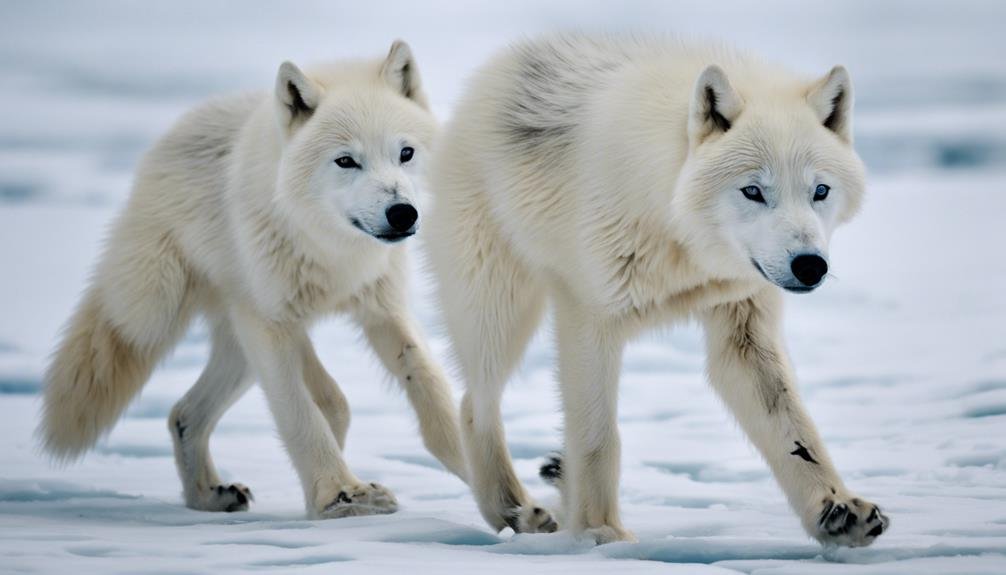
Exploring the Social Dynamics of Arctic Wolves
The intricate social hierarchy of Arctic wolves is a fascinating aspect of their behavior, centered around an alpha pair that leads the pack. This structure plays a pivotal role in their survival, influencing everything from hunting to pup rearing. Let’s delve into the nuances of their communal life and communication methods.
Pack Hierarchy and Reproduction
At the helm of the wolf pack is the alpha pair, responsible for leading their family and ensuring the continuation of their lineage. This exclusive reproductive right of the alpha pair is a testament to the pack’s well-organized social system, designed to pass on the strongest genes to future generations.
Communication Through Howling
Howling is a vital communication tool for Arctic wolves, enabling them to connect over vast distances of up to 10 kilometers. This method isn’t only about keeping the pack united but also plays a significant role in coordinating hunts and establishing their presence across their territory.
Hunting: A Group Effort
The hunting tactics of Arctic wolves are a blend of individual and collective efforts, adapting to the changing seasons and availability of prey. Whether hunting solo or as a group, their strategies showcase their intelligence and adaptability, critical for their survival in the harsh Arctic environment.
Rearing of Pups
The communal nature of Arctic wolves is perhaps most touching in the care they provide for their pups. Every member of the pack gets involved, emphasizing the importance of cooperation and solidarity in their society. This collective effort ensures that the young wolves are well nurtured and protected, ready to take on the challenges of their icy world.
The Significance of Howling Revisited
Beyond its primary function in communication, howling also serves to fortify the social bonds within the pack. It’s a way for Arctic wolves to express their unity, synchronize their hunting activities, and assert their dominance over their territory, illustrating the complexity and depth of their social interactions.
Conservation
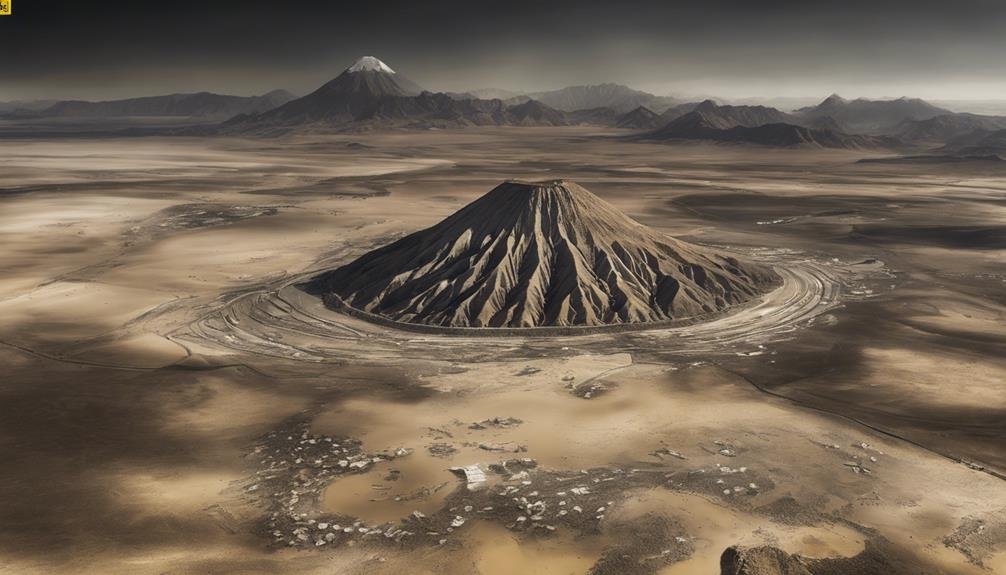
Conservation Needs of Arctic Wolves
Despite their status as Least Concern, the Arctic wolves face significant challenges that make their conservation a priority. Industrial development and climate change are two major threats that impact their habitats and food sources. With an estimated population of around 200,000 individuals, the stability of the Arctic wolf population is deceptive, masking the underlying threats that could jeopardize their future.
Industrial Development Impact
The advancement of industrial activities in the Arctic regions poses a direct threat to the habitats of these wolves. The encroachment of human activities into their territories results in habitat destruction, which not only limits the space available for the wolves but also affects their prey base. Species such as Arctic hares, musk oxen, and caribou are crucial for their survival, and any disturbance in their populations due to habitat loss can significantly impact the Arctic wolves.
Climate Change Challenges
The effects of climate change in the Arctic are profound, altering the ecosystem in ways that can disrupt the availability and distribution of prey for the wolves. These environmental changes can lead to a mismatch between the wolves and their food sources, further complicating their survival in this harsh environment.
Role of Conservation Organizations
The World Wildlife Fund (WWF) and other conservation organizations play a critical role in addressing these challenges. Their efforts are focused on preserving the Arctic wolf habitat and ensuring the protection of other endangered species within this ecosystem. Initiatives by these organizations are crucial for maintaining the ecological balance and supporting the survival of Arctic wolves in the face of environmental changes and human encroachments.
How to Support Arctic Wolf Conservation
Supporting conservation efforts is key to the survival of the Arctic wolves. Engaging with and contributing to organizations like the WWF through donations or symbolic adoptions can make a significant difference. These actions help fund conservation projects aimed at protecting the Arctic ecosystem and the species that depend on it, ensuring a future for Arctic wolves amidst the challenges they face.
Climate Change Impacts
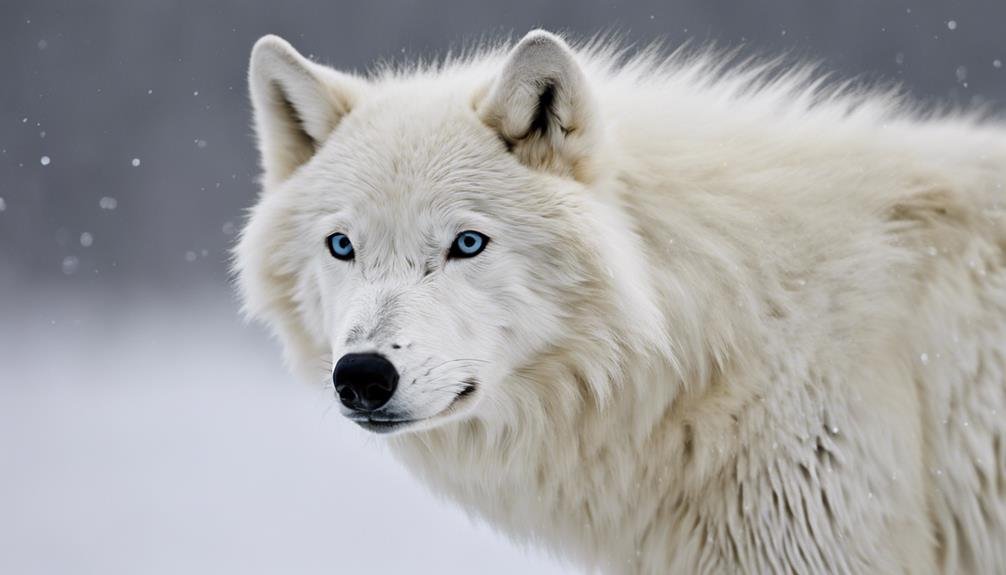
Impact on Food Sources
Arctic wolves are facing challenges in securing their usual prey, such as musk oxen and Arctic hares, due to shifts in the ecosystem driven by climate change. These alterations are making it difficult for wolves to find the nourishment necessary for survival.
Weather Variability and Hunting Challenges
The hunting grounds of Arctic wolves are becoming more unpredictable with the advent of extreme weather conditions. This unpredictability affects the reliability of their food sources, forcing wolves to adapt to these changing environments.
Habitat Destruction and Its Effects
Warming temperatures and the melting of ice are leading to the destruction of habitats not only for the Arctic wolves but also for their prey. This double-edged sword complicates the wolves’ hunting strategies and threatens their ability to survive in their traditional environments.
Biodiversity Loss and Its Implications
The decline in populations of key prey species like musk oxen and Arctic hares is indicative of a larger issue of decreased biodiversity. This trend is concerning for the overall health of the Arctic ecosystem, highlighting the far-reaching effects of climate change.
Other Interesting Facts
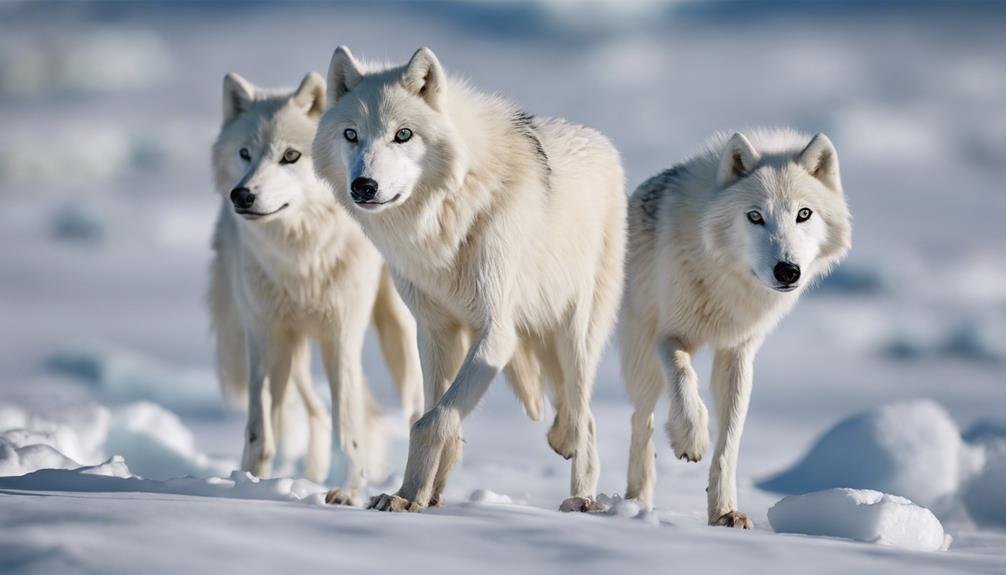
Arctic Wolves: Masters of the Ice
In the vast and chilling expanse of the Arctic, Arctic wolves stand out as remarkable survivors. These creatures have fine-tuned their lives to thrive in one of Earth’s most severe environments. Let’s delve into the fascinating aspects of their existence, from their hunting skills to their social intricacies.
Survival in the Freezing Wilderness
The Arctic wolf’s habitat spans the icy tundra, glacier-carved valleys, and frosty rolling hills. These wolves have developed exceptional navigation skills, enabling them to traverse this formidable landscape in search of food. Their diet is diverse, including muskox, Arctic hares, caribou, and lemmings. The wolves demonstrate an impressive ability to adjust their hunting techniques and diet based on availability, which sometimes means traveling long distances to track down their next meal.
Social Bonds and Hierarchical Order
The social structure of an Arctic wolf pack is a sight to behold. Packs typically consist of 7-8 wolves, often related by blood, with a dominant male leading the group. This hierarchical system plays a pivotal role in maintaining order, ensuring efficient hunts, and fostering group cohesion. At the heart of their social life is a monogamous pair – the alpha male and beta female – who are the only members to mate, thereby cementing the pack’s stability and continuity.
Resilience Amidst Environmental Threats
Arctic wolves display a profound resilience in the face of habitat destruction and climate change. Their ability to adapt to shifting landscapes while sustaining their complex social structures and hunting strategies is testament to their evolutionary prowess. These wolves embody the essence of survival in the Arctic’s merciless climate, showcasing the strength and adaptability required to thrive in such a harsh environment.
Through their remarkable survival skills, intricate social dynamics, and adaptive hunting strategies, Arctic wolves not only endure but flourish in the Arctic’s unforgiving wilderness. Their existence is a powerful reminder of nature’s resilience and the intricate balance of life in extreme conditions.
What are the differences between Arctic wolves and Arctic foxes in terms of behavior and habitat?
Arctic wolves and Arctic foxes display contrasting behavior and habitat preferences. While Arctic wolves thrive in packs and hunt in coordinated attack, Arctic foxes are solitary creatures and primarily forage for small rodents. Additionally, Arctic foxes are known for their remarkable ability to blend into their surroundings, one of the arctic fox interesting facts.
Frequently Asked Questions
What Are 5 Facts About Arctic Wolves?
What color is the fur of Arctic wolves, and why is it significant?
- Arctic wolves have white fur, which helps them blend into their snowy and icy environment, providing camouflage from predators and prey.
How do Arctic wolves communicate with each other?
- They utilize vocal communications including howls, barks, and whines, facilitating coordination in hunting, pup care, and maintaining the social structure of their pack.
What type of social structure do Arctic wolves exhibit?
- They have a complex social structure, forming packs that are led by an alpha male and female, which helps in cooperative hunting, territory defense, and rearing of pups.
Are Arctic wolves capable of adapting to their harsh environment?
- Yes, they have developed adaptations to survive in icy conditions, such as thick fur, padded feet, and a diet that can vary based on availability, allowing them to thrive in Arctic temperatures.
What are the conservation concerns for Arctic wolves?
- Despite their reproductive resilience, habitat challenges and a threatened status require urgent conservation efforts to ensure their survival amidst changing climate conditions and human encroachments.
How Long Do Arctic Wolves Live?
Q: How long do Arctic wolves live?
A: In the wild, Arctic wolves typically have a lifespan of 6-8 years, due to factors like harsh climates and the challenge of hunting. However, in captivity, their lifespan often extends beyond 12 years, thanks to reduced survival challenges and dedicated care from humans.
How Fast Can a Arctic Wolf Run?
Q: How fast can an Arctic wolf run?
A: An Arctic wolf can reach speeds of up to 40 mph. This remarkable speed enables them to hunt effectively, coordinate with their pack, and train their young in the challenging conditions of their Arctic environment.
What Do Arctic Wolf Eat?
What do Arctic wolves eat?
Arctic wolves primarily feed on muskox, Arctic hares, and caribou. They adapt their hunting techniques and track prey based on the seasons. During winter, pack hunting is crucial for their survival, ensuring they meet their nutritional needs despite the challenges posed by their environment and the climate.
How Do Arctic Wolves and Polar Bears Interact in the Wild?
In the Arctic, polar bears and wolves have limited interactions due to their differing prey preferences. Polar bears primarily hunt seals, while arctic wolves often target smaller mammals. However, competition can arise at shared scavenging sites. For accurate details about these interactions, be sure to explore polar bear information for more insights.
Conclusion
To summarize, the Arctic wolf plays a critical role in the Arctic ecosystem. Adaptations such as smaller ears and shorter muzzles allow it to thrive in the extreme cold, while its diet mainly consists of muskox, Arctic hares, and caribou.
However, climate change and industrial development pose significant threats to its habitat and food sources. The importance of conservation efforts can’t be overstated in ensuring the survival of this species.
As the effects of climate change intensify, it’s increasingly important to focus on the preservation of the Arctic wolf to maintain the balance within its ecosystem.


